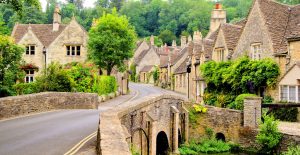
‘Retreat’ is right as it were the right term to use for the period we are discussing here. In the Western world, where we talk of ‘downtime’ and ‘siesta’ this is not the normal way of spending a holiday. Well, the Cotswolds is a perfect rural retreat where you can do nothing or everything, at your leisure. Sit in the sun, or chill out on the beach, or walk in countryside, or explore the fascinating cities and towns of the region with its fascinating mix of culture and dazzling natural beauty.
Catching a bite to eat is usual in English country resorts, but in the Cotswolds it’s a bit more interesting. The food has so much in common with the food on the Mediterranean island, yet it’s entirely unique. The richness of ingredients and the use of local products creates the authentic Cotswold cuisine. Wonderful fresh vegetables, meats and birds are mixed in with the fruit and produce of the land. The result is a harmonious blend, producing a food that is as tasty as it is delicate. Traditional Cotswolds produce, and especially the moist, dense cellada and the sauvignon Blanc, is a delight to the senses.
Adjacent to the Cotswold’s homes, and separated by a wall, are the ‘places of entertainment’ or ‘the pubs’. A stunning Cotswold stone cottage, adjacent to an 18th century stone farmhouse, was once the ‘ pub ‘ for the locals at Watercrook, (southeast of Cisbury, in the pleasant county of Wiltshire). However, the Summer Cotswold’s Cottage Restaurant at heat of the day, and a modern restaurant in the old part of the village, offers a hot and modern lunch and dinner, in the style of today’s top restaurants. Anybody, of course, may dine there.
To the west of the pleasant village of Woodstock, and overlooking the Cotswold hills, comes the ‘gentleman’s residence’ known as the ‘Gleaming Crossroads Inn’ where they offer an Ergonomics Workshop for Corporations. Once the upstairs bedrooms of the house were used to accommodate country dancers and passing seems, up to the late seventeenth century. Today it is the shop and restaurant, and the entrance to the crossroads laden crossroads inn are marked by Sir Arthur Salter in Salter’s ‘Bables’ series of guidebooks.
Next to the crossroads inn is the railway museum, with information on the Cotswold Railway, operated by the South West Railway (SLR) from 1940 until 1963, providing information on the history of that great industry and ensuing stations. An exhibition on the steam hauled by the steam-driven locomotives is comprehensive.
The museum next door concerns itself with Cumbria’s shipping history as freight is the backbone of the local economy. The three ships moored at Cornwall, in front of the Lloyd gateway, are historical and visiting them is interesting.
It is worth it to spend a couple of hours at the museum. The time spent there is worth all the attention.
To the museum information desk, where a wealth of information can be obtained on the heritage of Cumbria, is situated the museum itself, open Monday to Saturday from 10am to 6pm and during the third Sunday of each month. At the time of writing, admission was charged, so you will need to make a booking, by contacting the museum.
In summer the museum is open from the 1st October to 18th September, but this is only from 8.45 am to 6.30 pm, there is a small charge on Sunday mornings.
To Cumbria through the ages, serving the country’s royalty, peasant life and the development of the Cumbrian townships. Visit the museum to find out what has been Britain’s best family holiday cottage. One or two alternatives are Hill Top Farmhouse in Clubford or Middleflake House inrawn by clubford. You will find plenty of folk to help you but be ready to argument quite a lot!

